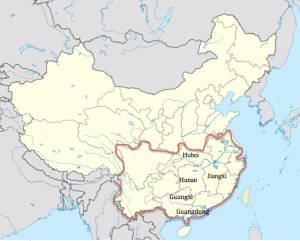The Background

The Chinese government started investing in genetically modified crops since the 1980s in an attempt to become self sufficient and to make up for the loss of arable land that occurred in the 1900s. The annual decrease in area of arable land signifies a dire need for crops with higher yield, as the decrease in the area of arable land is becoming a real threat towards food security of China.
The attempt that has won the most accolades is the development of super hybrid rice by Yuan Longping. Multiple strains of extremely high yield rice have been developed since the initiation of the high-yield project in 1996 (Yuan, 2015, p.13). Such developments of farming technology indeed alleviate the threat towards food security caused by progressive soil degradation.
Results of GM Rice
The first successful commercialized genetically modified strand was cotton, which yielded higher incomes for small farmers by increasing sown areas by 350% from 1997 to 2000 and decreased the use of pesticides significantly (Huang, Rozelle, Pray, Wang 2002, p. 675). On the other hand, GM rice varieties have similarly been a topic of research since the late 1980s and 1990s, but have not been commercialized yet.
Many studies have been conducted in particular, in the southern region of China (figure 1), where there is favorable climate for agriculture. Some studies have found:
- In the province of Hubei, an unauthorized strand was introduced and later was found that it contaminated food products by different companies (Price and Cotter, 2014, p.7).
- The cross breeding between GM rice and wild rice types might result in the fitness of weeds and wild populations that will get out of control and damage the environment (Chen et al. 2004, p. 67).
However, the studies also present mitigative strategies to benefit the ecosystem and the community of farmers:
- A case study in Guangxi showed higher yields in crop and less water use when a strand of rice was introduced (Pray et al. 2011, p. 1733). This hybrid also was modified to be drought tolerant to withstand the extreme conditions.
- GM Rice can be grown in good conditions and in an isolated area to prevent contamination and movement by abiotic factors (Jia et al. 2014, p. 1268)

Sources
- Chen, L. J., Lee, D. S., Song, Z. P., Suh, H. S., & LU, B. R. (2004). Gene flow from cultivated rice (Oryza sativa) to its weedy and wild relatives. Annals of botany, 93(1), 67-73.
- China location map [Location map of China.]. (n.d.). Retrieved December 6, 2016, from https://commons.wikimedia.org/wiki/File:China_edcp_location_map.svg
- Huang, J., Rozelle, S., Pray, C., & Wang, Q. (2002). Plant biotechnology in China. Science, 295(5555), 674-676.
- Jia, S., Yuan, Q., Pei, X., Wang, F., Hu, N., Yao, K., & Wang, Z. (2014). Rice transgene flow: its patterns, model and risk management. Plant biotechnology journal, 12(9), 1259-1270.
- Pray, C., Nagarajan, L., Li, L., Huang, J., Hu, R., Selvaraj, K. N., Napasintuwong, O., & Babu, R. C. (2011). Potential impact of biotechnology on adaption of agriculture to climate change: the case of drought tolerant rice breeding in Asia. Sustainability, 3(10), 1723-1741.
- Price, B., & Cotter, J. (2014). The GM Contamination Register: a review of recorded contamination incidents associated with genetically modified organisms (GMOs), 1997–2013.International Journal of Food Contamination, 1(1), 1.
- Yuan, L. (2015). Development of Super Hybrid Rice for Food Security in China. Engineering, 1(1), 13-14. DOI 10.15302/J-ENG-2015021
-
Yuan Longping in 1962 [Yuan was reading the newspaper in 1962.]. (n.d.). Retrieved October 6, 2016, from https://zh.wikipedia.org/wiki/File:Yuan_Longping_in_1962.jpg
